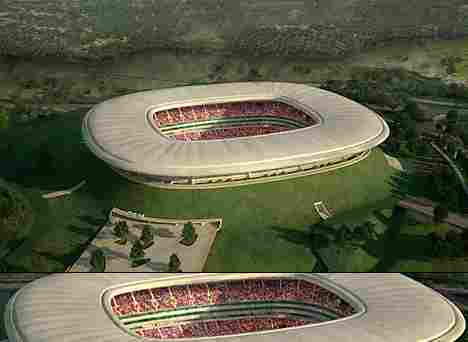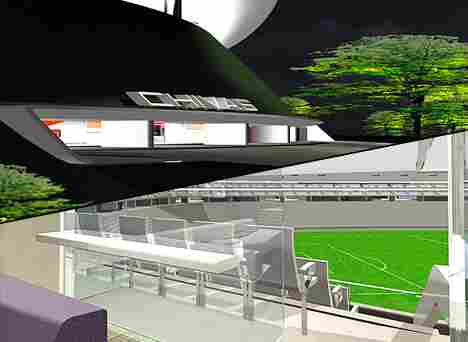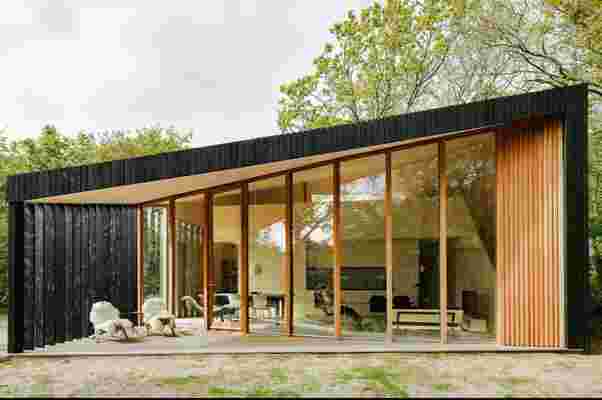
Yes, you read that right – it has a flexible layout which means no need to build separate rooms for different purposes that are divided by walls like a traditional home.
For the last 15 months, all of us have been planning our post-pandemic vacations and this holiday home is now on top of my wishlist because of its gorgeous design! The luxury cabin-style structure is located on the Dutch island of Texel in the Netherlands and is just a short walk to the North Sea. Designed by Rotterdam-based Orange Architects, the modern villa saves space thanks to its prefabricated construction and flexible layout.
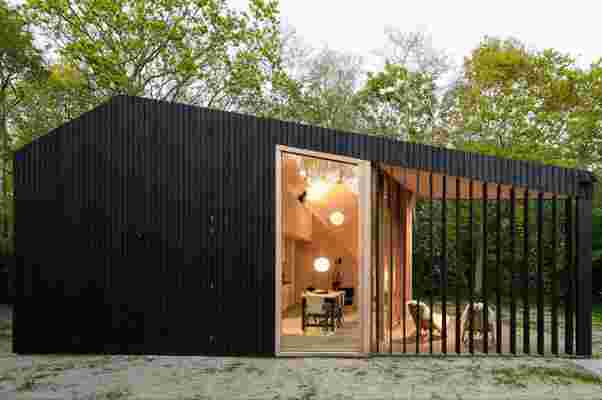
Yes, you read that right – it has a flexible layout which means instead of building separate rooms for different purposes that are divided by walls like a traditional home, the designers optimized the floor plan with prefab, multifunctional spaces that can be transformed or divided temporarily to create separate zones for different functions.
Since it is a holiday home, the villa has to serve more purposes than a regular house because people will tend to spend more time together in communal areas by day and only use private spaces at night. The team of architects designed rooms in a way that they served at least two functions to keep a compact volume while still maximizing space. Each room is a fluid open space during the day and can be turned into a private one by night.
During the day, the villa serves as one continual space during the day, and at night residents can separate different sections by either closing the wooden panels in the hall or turning them 90 degrees. There is also a hidden shower and sink to create an en suite bathroom! The walls and roof were prefabricated at the contractor’s workshop before being transported to the island to save construction costs. The villa has a black wooden shell which is beautifully complemented by warm wood interior tones.
My favorite part is the south-facing floor-to-ceiling windows which extend the main living room area onto a covered terrace and adjacent garden. Several skylights on the upper floor bring in more natural light and the villa is also fitted with sloping rooftop solar panels as well as a rainwater drainage system for irrigation. I could move here permanently as long as they have a good wifi connection!
Designer: Orange Architects
These sustainable terraces create the largest interconnected community living room
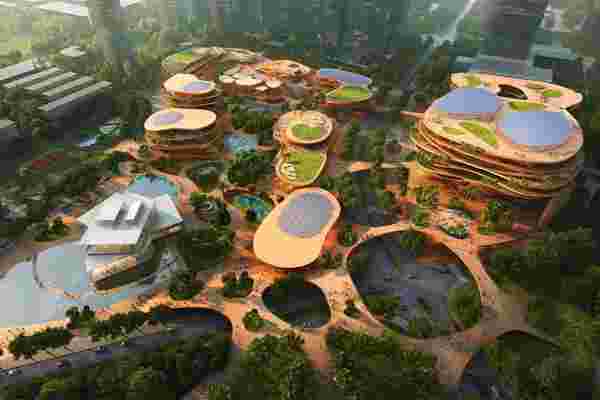
Innovative Dutch architecture studio, MVRDV, is all about enabling the development of cities and landscapes towards a better future for its residents and the environment. Their most recent project, the Shenzhen Terraces, is being built at the Shimao ShenKong International Centre and it is a glimpse into what architecture in 2020 will look like. The Gryffindor common room has got nothing on these sustainable community terraces, you’ll see!
The Shenzhen Terraces are designed to encourage sustainable living and the structure will be the center of the student community at Universiade New Town in Longgang District. Think of it as a multi-dimensional urban living room for the busy college town. The terraces are all stacks of unusual shapes because the idea is to build them around the existing outdoor public places – evolving spaces without disrupting them. All the buildings in the structure will be connected through the second floor and the small outdoor atriums throughout the community are actually places where the terraces converge to connect. “Shenzhen Terraces aims to bring vitality and innovation to the area through seamless integration of landscape, leisure, commerce, and culture,” says MVRDV. The largest building will consist of a bus terminal and a conference center connected by a large open-air atrium in the middle which optimizes the horizontal space that makes the terraces stand apart from the rest of the town.
It is a sustainable hub for the surrounding town as it offers entertainment, educational, transportation and recreational amenities while also giving back to the surrounding environment. There is a generous amount of water features and plants included in the plan so it can contribute to reducing the local temperature and become a safe space for urban wildlife. The terraces also have a facility to collect rainwater and that can be used for additional food and water resources making the community more self-reliant. Cement alone is responsible for 8% of the global CO2 emissions which makes MVRDV’s choice to use recycled concrete a very eco-conscious one while NASA and architecture schools around the world continue to test other construction material alternatives like mushrooms ! The recycled concrete will be used in all buildings as the aggregate, and photovoltaic panels will adorn extensive portions of the rooftops. The entire structure is designed to sustain the community without adding any burden on the local environment – that is why the integration of natural elements is crucial to create a climate buffer for the interiors. In addition to the facilities in the larger buildings, the terraces also host a library, a gallery, and an outdoor theatre.
Each element has been carefully thought about in the aesthetic sense but also how it merges with the structure, the city, and the community – there are a purpose and benefit for it all. The Shenzhen terrace’s grassy, sub-tropical plateaus contrast the city’s vertical high-rises as an example of creating a space where civilization can co-exist with nature. It provides a landscape that beautifully knits life as we know it with a better future.
Designer: MVRDV
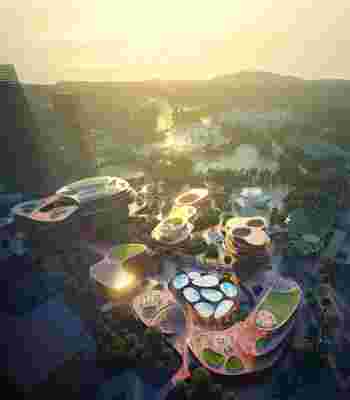
It is a Football Stadium Inside a Volcano
Yeah. That’s what’s up. It’s built on top of the mountain. Or at least it’s made to seem as though it must be. Plush-ed out and ready to house the sacred game for whatever team doth so deserve such a heavenly house. Guadalajara – 2009.
To be build in Guadalajara – who will get the honor? Club Deportivo Guadalajara, Los Zorros, or La Universidad Autónoma de Guadalajara (UAG). Chivas, Atlas, or Tecos?!
Limited info given by the designer Jean-Marie Massaud:
Do you think you could build such a thing for a measly 100M USD? What’s the backup plan for if the volcano explodes? Probably better that it’s build first, land second. And YEAH, a Skateboard park. You read right. It’s got soccer, food, and a skateboard park. I’ll just set up a tent here, and… I am home!
GOOOOOOOOOOOOL!!!
VOLCANO UPDATE: Yes, volcanos do still erupt. Newest eruption in Tokyo
Designer: Jean-Marie Massaud
